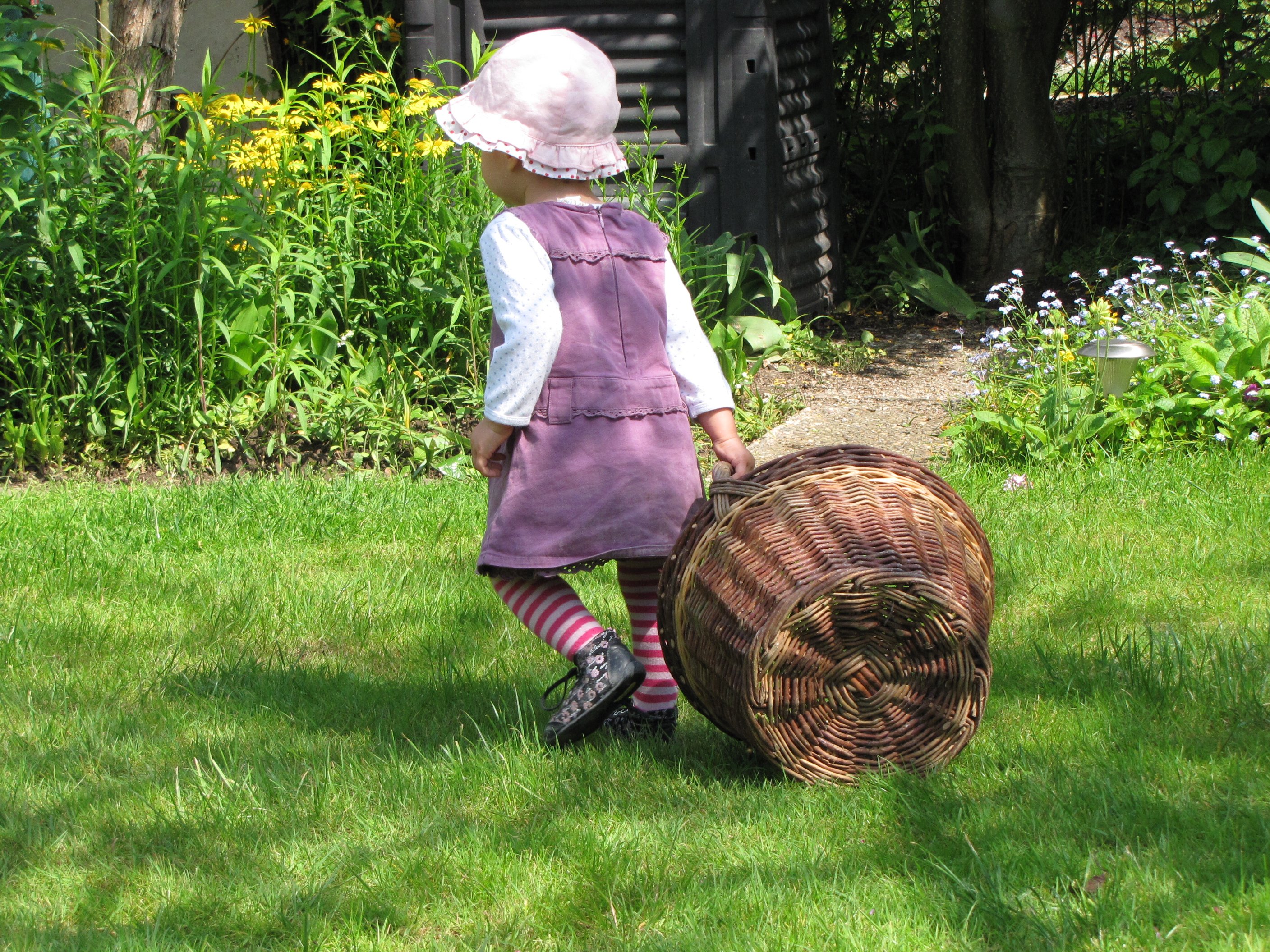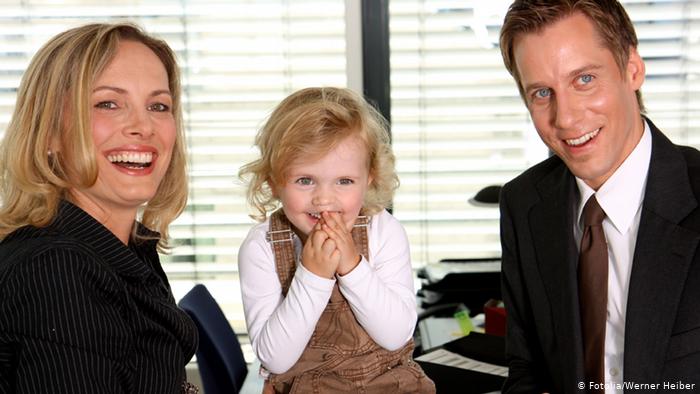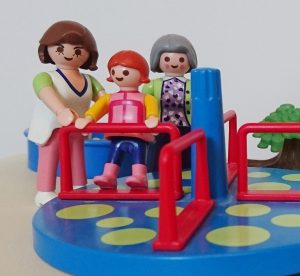
After women had to make do with children, the kitchen and the church, the old imperative was not replaced by a new one made up of children, day care centers and careers?
Historical outline
Development of care for small children in the past 200 years (Germany)
19th century: very first cribs
The first crèches were opened in the 19th century – mostly by nobles – for example in 1802 in Detmold, in 1844 in Paris and in 1849 in Vienna. Industrialization and the associated rural exodus were the reason why forms of childcare – beyond the family association – became established. At that time, childcare was primarily aimed at impoverished families or widowed women who had to secure family support through gainful employment.
World War I and National Socialism
With the outbreak of the First World War, the expansion of crèches began because young mothers were needed as additional workers. During the Weimar Republic, most of the childcare facilities were closed due to the unrealizable funding. In National Socialism, nativity scenes (apart from so-called harvest cribs, which were opened for a few weeks at harvest time) hardly played a role. In line with the National Socialist ideal, mothers were expected to stay at home and devote themselves to bringing up the children.
GDR – reasons for the desired employment of women
After the end of the Second World War, the expansion of cribs in the GDR was strongly promoted. In the course of a socialist transformation of society, women – even as mothers of small children – should be able to work. Emancipation of women is one of the oldest demands of the labor movement. But also for economic reasons it was necessary for women to work in the GDR. The country had to be rebuilt in the 1950s after the war, and many people fled to the West, so all available labor was needed. Later, the dilapidated economy of the GDR ensured that the way was paved for women by comprehensive childcare: in order to increase production, it was necessary for women to work. The proportion of working women in the GDR was one of the highest in the world. In 1986, 91.3 percent of women were employed (Federal Republic: approx. 50 percent).
In addition, the SED was interested in influencing the socialist upbringing of the youngest citizens, in which the community was at the center, at an early stage and any expression of individuality should be prevented as far as possible.
GDR – family time?
A study in the mid-1970s found that two-thirds of the parents were in direct communication with their young children for one to two hours a day, but one-third less than half an hour or only on weekends. 65 percent of their children were in the crèche six to nine hours a day and 25 percent more than nine hours a day (Schmidt-Kolmer 1977), because the parents’ working hours and journeys as well as the procurement of everyday goods were demanding.
DDR: model "parental benefits" for a year
From the mid-1970s, mothers could be released from work for a year, during which time they received around 80 percent of their wages and looked after their child at home, which many mothers did. The job was secured three years after the child was born.
GDR: nationwide supply with childcare places
At the beginning of the 1980s, a crèche place was available for all children of the GDR, in 1989 the official quotas were for babies and Infants who were cared for in crèches at 80 percent. The opening times of the day care centers were adapted to the working hours of the mothers (6 a.m. to 6/7 p.m.), who worked almost exclusively full-time. The daycare was financed by the state, the parents only had to pay the food costs. If necessary, support was also possible on Saturdays. Weekly crèches, in which babies and toddlers could be accommodated from Monday to Friday, supplemented the GDR’s state childcare facilities. However, studies showed that the children who had contact with their parents at the weekend at the most clearly became clear worse developed as day nursery children, whereupon the further expansion of the day nursery was not forced. Parents’ chances of deliberately permanently withdrawing their children from state education in crèches and kindergartens were slim. Those who looked after their children themselves were often disadvantaged.
GDR: care key in cribs
The specified care key in GDR crèches was set at 1: 5-6 (educator: children), but in reality up to 20 young children were often looked after by two educators. In the beginning, only nurses and nurses worked in the crèches. From 1972, a three-year technical school qualification qualified the nursing staff as nursery teachers.
GDR: State educational program in cribs
A state-prescribed educational program clearly stipulated how the babies and toddlers should be looked after, which goals each child should achieve and in what period. For example:
Game of the Infant – objective game from the 4th month
No. 9 game at the table: three infants are sitting at the feeding table, the nurse is sitting and is moving mechanical toys (pull toy, car, small humming top) in motion. Name the game items: B. the car: tutut and drives the car on the table from child to child. Note: Use only one item at a time.
Stimulate sound imitation: The nurse sets the spinning top in motion, buzzing along by looking at the child and pressing her lips tightly together.
Instructions for playing: The nurse rolls the ball over the table and says: Petra, now the ball is coming. Generation of joy: The nurse places a few rattling cubes on top of one another and knocks them over. Note: This game is accompanied with joyful cries, singing and speaking to the child.
No. 19 imitation of movements, please – please do:
The nurse shows the baby a colorful object. The child wants to reach for it. The nurse clapped her hands and asked the child: "Please, please – please!"
The nurse helps. Then she gives the item to the child. Note: Exercise has to be repeated often.
Crèche occupancy rate in the new federal states after reunification
After reunification, many crèches were closed in the new federal states – the reasons for this were financing difficulties (due to the reunification, the financial responsibility for the day-care facilities that had been state until then passed to the East German municipalities) and the sharp drop in births. From 1993, extra-family care for children under the age of three in the new federal states fell to about half of the former GDR level.
Federal Republic of Germany: Childcare (1949-1980s)
In West Germany a family ideal was propagated, which saw the woman in the role of mother and housewife. Until 1977, the employment of a wife was only permitted by law with the consent of the husband. Children were usually cared for in the family in the first years of life. The number of crèche places was correspondingly low. Going back to the hospitalism studies by René Spitz and the results from the attachment research by John Bowlby, care outside the home was viewed critically until the 1970s. It was not until the beginning of the eighties that the crèche care places began to be expanded somewhat more intensely, as demand increased and was presented more aggressively.
FRG: child benefit and maternity benefit
From the 1950s to the late 1980s, parents in Germany only received child benefit and from the end of the 1960s maternity benefit. Otherwise, parents were granted tax allowances for their children.
In 1979 maternity leave was introduced, which, after the eight-week maternity protection period, guaranteed working mothers maternity leave of up to 4 months and tax-financed maternity allowance equal to the net wage (maximum DM 750 per month). During this time they were insured free of charge in health, pension and unemployment insurance.
FRG: 1980s and after reunification
From 1986 to December 31, 2006, the Federal Childcare Benefits Act regulated childcare allowance and childcare leave, which has been called “parental leave” since 2001. When it was introduced in 1986, the amount and duration of the child-raising allowance was set at DM 600 for ten months. In 1988 the subscription period was extended to twelve months. The duration of the child benefit was gradually increased to two years. Since 1998, parents have been able to decide whether they want to receive the regular amount for a maximum of 24 months or the so-called budgeted child-raising allowance for a maximum of twelve months. In 2003 the regular amount was € 307, the budgeted child-raising allowance € 460; As of January 1, 2004, the amounts were reduced to € 300 and € 450.
According to the Federal Child Benefits Act, parents were entitled to parental leave until the child was three years old. Parental leave could be taken by one of the two parents or shared among the parents. Since the parenting allowance law was changed on January 1, 2001, the leave called "parental leave" could also be taken jointly by both parents; until then it was only possible to change the parents.
Since 2007: parental allowance and parental leave
The Federal Parental Benefit and Parental Leave Act has been in effect since January 1, 2007. The payment of parental allowance stipulated therein is primarily intended to enable temporary retirement from the profession without having to accept major restrictions on living standards. According to the law, it should encourage people to have more children so that they can help secure their future. Parental allowance is paid in the year after the child is born. (Since 2015, it is no longer possible to extend the parental allowance (by halving the Asu payment) to two years.) Up to 36 months of unpaid time-out from the job to the child’s third year are possible for each parent. Parents can make flexible use of this for 24 months between the third year of life and the child’s eighth year.
2008: Expansion of childcare places for toddlers, establishment of legal entitlement to childcare place from 2013
In 2008 the Grand Coalition passed the Child Promotion Act. It stipulated that from August 1, 2013, parents had a legal right to a childcare place (in a crèche or in day care) for their children from the age of 1 to 3. An estimated 12 billion euros were earmarked for the expansion of the childcare places. Family Minister Ursula von der Leyen (CDU) spoke of one in connection with the legal claim "Milestone for more compatibility of family and work and more education". The current family report from 2012, published by the Federal Ministry for Family, Seniors, Women and Youth, gives a dubious testimony to the quality of care:
"The child misses out on education through extra-family care and education through his well-educated and competent parent. This finding coincides with studies according to which children from low socio-economic situations benefit most from the educational stimulation of day care centers, but only if they are of good quality. For children from the middle and upper classes, the educational offer in the day care centers lags behind the family educational stimulus."
2015: Parental allowance plus
Since 1.7.2015 there has been the possibility to claim ElterngeldPlus. Parents receive four additional Parental Allowance Plus months if they both work between 25 and 30 hours a week during this time.
2017: UN criticism of the low employment rate for women in Germany
In 2017, the United Nations criticized the fact that there were too few women in Germany. The reason is the lack of compatibility between family and work. The German economy lost billions every year because only around 54 percent of women were employed.
RELATED ITEMS
-

Family policy – it started at 25 dm per child (archive)
Child benefit was introduced 50 years ago. Stefan Sell in conversation with Katrin Heise. The social scientist Stefan Sell reminds that this…
-

Most parents in Germany still think in old models: the man works, the woman looks after the children. Only the east ticks differently, like one…
-

Mental disorders in children – psylex
Clinical Psychology – Mental Illnesses How useful are preliminary examinations in children for mental illnesses? 02/16/2014 Researchers at the…
-

Ten points that show how kita has changed – all about kita
KiTas are always a mirror of their respective times. Every decade has different answers to the questions: What is best for my child? Which role…
